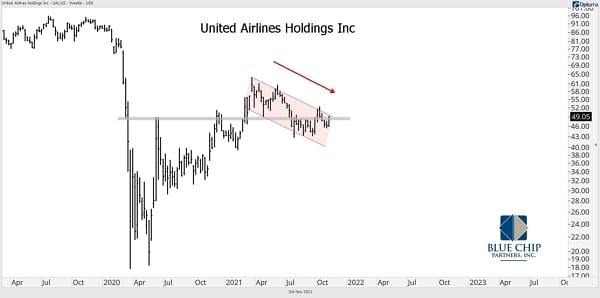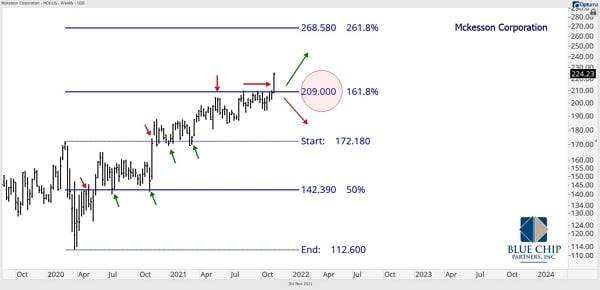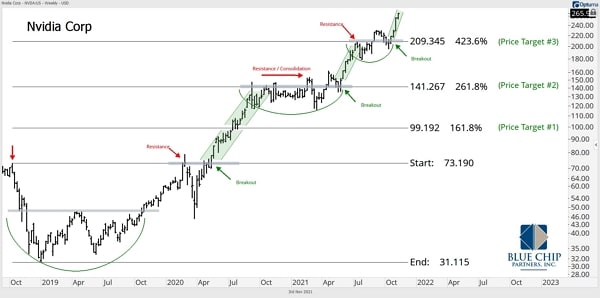The Ultimate Partnership – Part Two
In part two of our four-part series the following concepts will be illustrated:
- Price is a leading indicator for both corporate and economic news.
- Stock prices are not normally distributed – they trend.
- Upside targets for company stock can be derived from market-based projections.
Using Technical Analysis to Make Better Trading Decisions
As executives manage their own behavior when it comes to trading stock, they should not forget about the analytical tools and support that can help in that endeavor.
Corporate insiders have an informational edge on Wall Street analysts, banks, the financial media and even most money managers. This allows them to more accurately estimate the intrinsic value of their company based on specific information, including the company’s quality of earnings, growth outlook, competitive advantages and overall management stewardship.
Even so, that insight yields an incomplete analysis that may not be enough to make objective buy/sell decisions. This insight certainly helps answer questions about what to buy and sell. However, it does not necessarily help executives decide when to buy and sell their stock.
Filtering Out Market Noise
Corporate fundamentals drive long-term price movements, but the two don’t always move in sync. A great company doesn’t automatically become a great stock, and vice versa. This dichotomy can be particularly difficult for an insider with a deep understanding of a company’s business to grasp because it runs so counter to their instincts and the reality of the business.
Executives are also likely to be very attuned to their company’s stock price behavior and narrative. However, those two metrics also have weaknesses when it comes to guiding trading decisions. For example, price behavior, which is based on the supply and demand for shares, is a refreshingly simple and dependable metric. When there are more buyers than sellers, the stock price goes up. When there are more sellers than buyers, the stock price declines. However, this information alone is not enough to decide whether to buy or sell a company’s stock.
The narrative behind a company is also a poor guide for buying and selling stock. Price movements resulting from the underlying facts of that narrative generally occur first, not the other way around. As the saying goes, “buy the rumor, sell the news,” which is why The Conference Board uses the performance of the S&P 500 as one of its leading economic indicators.
Although there is no foolproof way to make money in the stock market, optimal trading decisions are made when the executive’s comprehensive knowledge of company fundamentals confirms the results of technical analysis, and vice versa. Moreover, technical analysis can not only identify a great stock, it can also identify when to buy or sell that stock.
How Technical Analysis Broadens The Conversation
Let’s look at an example of how technical analysis can support better buy/sell decision making. The price-to-earnings (P/E) ratio is a commonly used valuation metric on Wall Street. However, corporate executives and other insiders often focus solely on the denominator (earnings) and entirely dismiss an analysis of the numerator (price).
Stock price is obviously important, but a thorough analysis requires more than a snapshot of yesterday’s closing stock price. Ideally, it would also include data identifying price trend, momentum and key levels of polarity (when changes in a stock’s supply and demand cause a stock’s support to become resistance and resistance to become support).
In October 2021, United Airlines (UAL) had a trailing 12-month P/E that was roughly nine times earnings, less than half of the valuation of the S&P 500. According to some investors, the stock is “cheap”. However, as the chart below illustrates, the company’s price has deteriorated over the last several months, with a change in trend beginning in mid-March 2021. This can be identified on the chart by the series of lower highs and lower lows. UAL is also hovering just below key levels of support, the price level that can pause or slow a downward trend in stock price.
In general, technical analysis would not support a buy decision on this stock without a reversal of the current downtrend (red channel below). A reversal of trend would be illustrated by a series of higher highs and higher lows, and a confirmed breakout above resistance.

Technical Analysis In Action
Technical analysis can also help executives make sell decisions in order to manage two key risks –a heavy concentration in a single stock and the potential for stock price deterioration or underperformance. Effective wealth management requires action to address the former before executives are hurt by the latter. Diversifying a portion of company shares is a prudent way to achieve this, particularly when the stock’s risk vs. reward ratio becomes less favorable.
A common technique to identify both (1) risk vs. reward and (2) stock price targets involves considering Fibonacci retracement or extension levels. The mathematical sequence behind Fibonacci levels has been used by stock and commodity traders for centuries. When used in technical analysis, Fibonacci extension levels can provide guidance on when stock price trends could potentially exhaust themselves, or the magnitude of a sustained move to the upside. The employment of common extension levels such as 61.8%, 100%, 161.8%, 200%, and 261.8% can transform financial markets from a seemingly random gambling mechanism into a meaningful tool for wealth creation and preservation.
The chart below illustrates Fibonacci retracement and extension levels for McKesson Corp (MCK), a health care coverage and access company, following the onset of the Covid-19 pandemic:

Fibonacci’s 161.8% extension level offers a logical area of resistance near $209/share. When the share price originally approached this level in May 2021, a McKesson executive may have considered diversifying a portion of their company stock holdings. There wasn’t much more “juice in the squeeze” at that time. Said another way, as the stock approached $209/share, the risk vs. reward ratio became less attractive for the shareholder. He or she could have avoided the opportunity cost of being caught in a roughly 5-month trading range.
However, a confirmed breakout above $209/share flips the odds back in favor of a sustained move higher. Technical analysis suggests a long position is warranted above this key Fibonacci extension level. Upon a confirmed breakout, the new price target becomes $268/share using the subsequent Fibonacci Extension level of 261.8%.
Gauging Stock Momentum
Stock price appreciation between Fibonacci retracement and extension levels occurs due to momentum. Newton’s first law of motion states that an object in motion will stay in motion unless acted on by a force. The same holds true for stocks, which are empirically proven to have a non-normal return distribution (i.e. stocks trend).
Momentum suggests that, with some exceptions, rising stocks continue to rise and declining stocks continue to decline. As a general rule, investors are better off leaning into rising stocks and leaning away from declining stocks.
The chart below uses Fibonacci extension levels to show how momentum has played out in Nvidia Corporation’s stock (NVDA).

Creating A Buy And Sell Strategy
As these examples show, technical analysis can provide unique insight to corporate executives who possess a deep fundamental understanding of their business. By identifying and following stock trends, while also anticipating when those trends will be exhausted, executives can develop an effective and intentional strategy for diversifying a portion of their concentrated company stock holdings.
Consider Partnering With Blue Chip Partners
Multiple advisors at Blue Chip Partners hold the Chartered Market Technicians (CMT) designation – a credential held by few in the private wealth management community. This means our team is uniquely qualified to provide technical analysis and insight on individual stocks. Individual stock analysis can be especially valuable when an insider is considering selling a portion of their concentrated position.
We recommend corporate insiders explore our thinking prior to transacting directly held shares, vested Restricted Stock Units (RSUs), Performance Share Units (PSUs) and stock options. We are confident our perspective will act as the perfect complement to helping insiders achieve a better outcome with company shares.
Read more articles on Executive Compensation here.
Expressions of opinion are as of this date and are subject to change without notice. The information provided does not constitute tax, legal, accounting, or other professional advice and is without warranty as to the accuracy or completeness of the information. Any information provided is not a complete summary or statement of all available data necessary for making an investment decision and does not constitute a recommendation to buy, hold or sell any security. The information has been obtained from sources considered to be reliable, but we do not guarantee that the foregoing material is accurate or complete. There are limitations associated with the use of any method of securities analysis. Indices are included for informational purposes only; investors cannot invest directly in any index. Every investor’s situation is unique, and you should consider your investment goals, risk tolerance and time horizon before making any investment. Prior to making an investment decision, please consult with your financial advisor about your individual situation. Past performance does not guarantee future results. Investing involves risk and you may incur a profit or loss regardless of strategy selected. There is no guarantee that any statements, opinions or forecasts provided herein will prove to be correct.